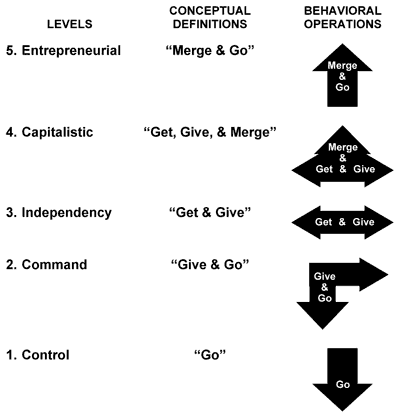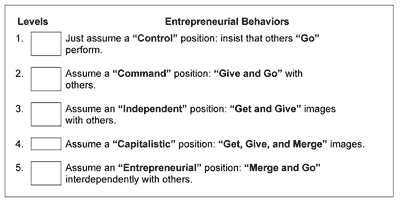The American Presidency:
4. Entrepreneurial Enterprise
Perhaps the least known attribute of Washington was his entrepreneurial initiative. While fulfilling Jefferson’s ideal of democratic leadership, he also exemplified Hamilton’s ideal of free enterprise. For example, during the Revolutionary War, he not only led the troops but fed the troops from his agricultural and nautical harvests. Not knowing whether he would ever get paid or, indeed, knowing that he would be executed if we lost the war, Washington modeled both the ideation and the risk-taking of the American entrepreneur.
Free Enterprise reflects the levels of enterprising relationships within, between, and among economies. Free enterprise is the phenomenon that transformed America from a “colonial economy†to the “economic leader of the world.â€
Only in America during the second half of the 20th century did “Entrepreneurial Capitalism†take hold in all areas and levels of economic enterprise. Led by America’s Free Enterprise, “Entrepreneurial Capitalism†served to lead the world to explosive and sustained socio-economic growth.
We may view the Free Enterprise Scale in Table 3. Once again, the levels are developmental from 1 to 5. Also, level 3, Independency, is the threshold learning experience that allows independence of direction. Below level 3, the command and control enterprises dominate. Above level 3, the entrepreneurial and the capitalistic enterprises dominate as the critical sources of generating wealth.
At level 3, Independency, would-be producers share both capitalistic and socialistic or command images of economic enterprise. This is illustrated by the behavioral operations of “Get and Give.†Each “gets†the images of others before “giving†his or her image of enterprise.
At level 4, Capitalism, producers share images in order to “merge†new images. The “merged†images center around the definition of capitalism as “the ingredients that are most important to generating wealth.†The behavioral operations of “Get, Give, and Merge†serve to maximize meeting producers’ values and marketplace requirements:
Table 3. Entrepreneurial Enterprise Scale

At level 5, Entrepreneurial Enterprise, the entrepreneurs have already “merged†images of capitalistic sources of wealth before “going†to interdependent processing toward generating the wealth. The behavioral operations of “Merge and Go†illustrate entrepreneurial interdependency.
Below level 3, the enterprise is constricted selectively by command or totally by control. At level 2, Command, orders are “given†for the specific areas to be controlled. Behaviorally, this level is manifested in “Give and Go†orders. There is no “getting†of images from the other producers involved (suppliers and distributors, as well as consumers).
At level 1, Control, there is a total takeover of all marketplace decisions and this is communicated by the totalitarian command, “Go!â€
Once again, you may rate yourself or others on the Entrepreneurial Enterprise. As private or public sector helpers or leaders, rate yourself and others in the following Entrepreneurial Behaviors:
Ratings of Entrepreneurial Enterprise

Finally, you may again be surprised or shocked at the low levels of Entrepreneurial Behaviors. For example, whether you or others are in a public agency or private corporation or function as an individual entrepreneur, if you do not “Merge and Go†to process interdependently, you will not have “The Best Idea†and will have no comparative advantage in your entrepreneurial positioning.
In summary, Entrepreneurial Enterprise is a necessary condition of all socio-economic endeavor. It ensures that generative initiatives drive the GICCA Market Curve: Generating, Innovating, Commercializing, Commoditizing, Attenuating. Again, at the highest levels of entrepreneurial enterprise, it ensures the mutual benefits to which we dedicate our processing.
Recall that the function of Entrepreneurial Enterprise is Prosperity within, between, and among the citizens of the nation, its states and communities, and its business enterprises.
Ultimately, we get what we assume for our Entrepreneurial Enterprise—generating and innovating, risk-taking and managing.
